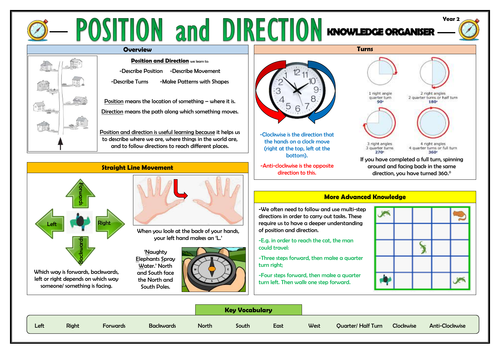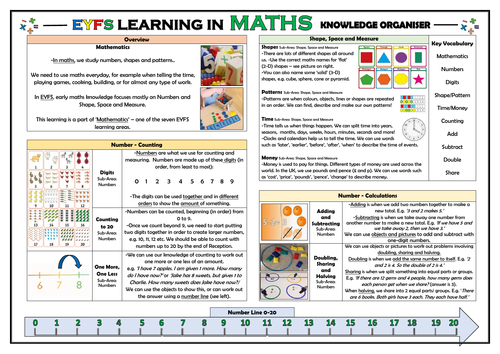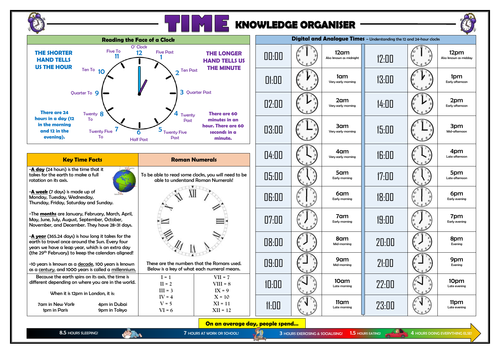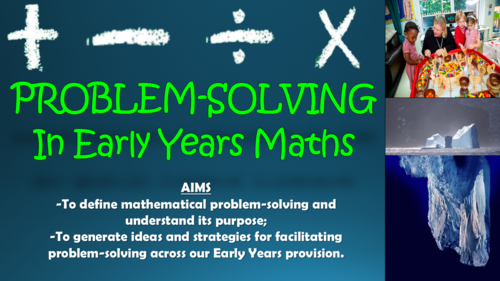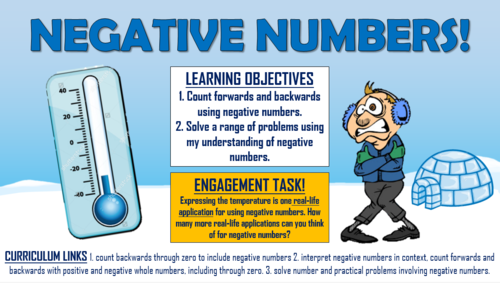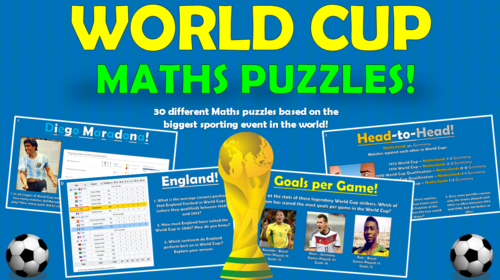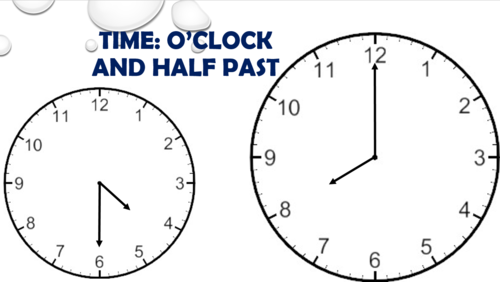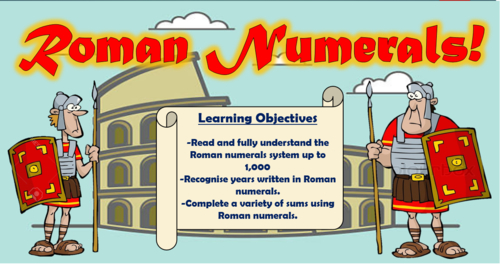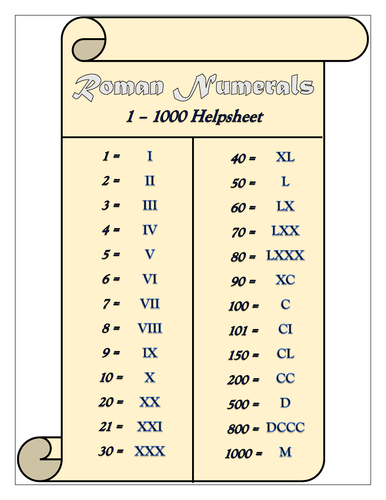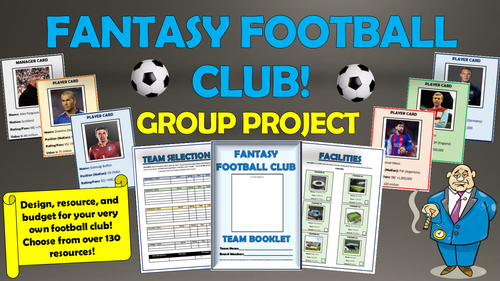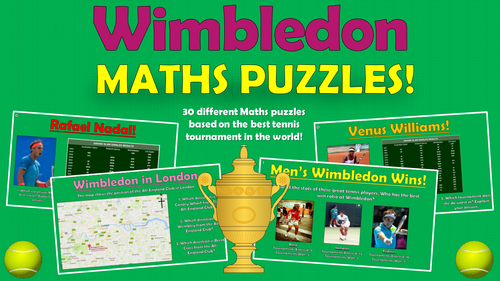
3k+Uploads
1904k+Views
2237k+Downloads
Mathematics

Y2 Position and Direction - Knowledge Organiser!
This clear, detailed and visually-appealing resource offers a complete reference point for Year 2 teachers, parents and children when covering ‘Position and Direction.’
The content is organised into the following sections:
-Overview: Learning areas covered, key definitions, why this learning is important;
-Straight Line Movement: Forwards, backwards, left, right, north, south, east and west;
-Turns: Clockwise and anticlockwise, half turns, quarter turns, three quarter turns and full turns;
-More Advanced Knowledge: Mutli-step directions;
-Key vocabulary.
The resource is designed to be printed onto either A3 or A4, and is provided as both a PDF and a Word version (so that you can edit if you want to). All images used are licensed for commercial use and are cited on a separate document (included).

Year 1 Place Value (within 10) Knowledge Organiser!
This clear, detailed and visually-appealing resource offers a complete reference point for Year 1 teachers, parents and children when covering ‘Place Value (within 10)’ mathematics content.
The content is organised into ‘Entry Knowledge’, ‘Core Knowledge’ and ‘More Advanced Knowledge’ and contains information relating to the following objectives:
-Sort up to 10 objects -Count objects to 10
-Count objects from a group of 10 -Represent up to 10 objects
-Represent numbers up to 10 -Count forwards to 10
-Count backwards from 10 -Count one more for numbers within 10
-Count one less for numbers within 10 -Perform counting activities
-Learn one to one correspondence -Compare up to 10 objects
-< > and = for numbers within 10 -Compare numbers within 10
-Order up to 10 objects -Order numbers up to 10
-Learn about ordinal numbers -Know the number line from 0-10
The resource is designed to be printed onto either A3 or A4, and is provided as both a PDF and a Word version (so that you can edit if you want to). All images used are licensed for commercial use and are cited on a separate document (included).
Bundle Sale

Subject Foundations in EYFS - Knowledge Organisers Bundle!
These clear, detailed and visually-appealing resources help to detail and categorise the EYFS foundation learning in each of the primary curriculum subject areas
It is an important resource for EYFS teachers and parents, but also subject leaders, to aid them in the development of a clearly-mapped and well-sequenced subject curriculum across the school.
This organiser groups the subject-related learning into the relevant EYFS areas of learning (e.g. Understanding the World, Expressive Arts and Design, Communication and Language, etc.)
The resources are designed to be printed onto A3, and are provided as both PDF and Word documents (so that you can edit if you want to). All images used are licensed for commercial use and are cited on a separate document (included).

EYFS Learning in Maths - Knowledge Organiser!
This clear, detailed and visually-appealing resource helps to detail and categorise the foundation learning in mathematics that takes place in the EYFS stage.
It is an important resource for EYFS teachers and parents, but also maths subject leaders, to aid them in the development of a clearly-mapped and well-sequenced maths curriculum across the school.
This organiser groups the maths-related learning into the relevant EYFS areas of learning - for maths, this is the ‘numbers’ and ‘shape space and measure’ strands of mathematics.
The resource is designed to be printed onto A3, and is provided as both a PDF and a Word version (so that you can edit if you want to). All images used are licensed for commercial use and are cited on a separate document (included).

Time Knowledge Organiser/ Revision Mat!
This clear, detailed and visually-appealing resource offers a complete reference point for students learning or revising knowledge relating to understanding time. It contains comprehensive sections on:
Reading the Face of a Clock - including understanding the minute and hour hands;
Key Time Facts - understanding the duration of days, weeks, months, years, etc;
Roman Numerals - to aid children in telling the time on old-fashioned clocks;
Digital and Analogue Times - looking at different ways to express the time using the 12 and 24 hour clocks, using both digital and analogue clocks;
Average Time Spent in a Day Timeline
The resource is designed to be printed onto A3, and is provided as both a PDF and a Word version (so that you can edit if you want to). All images used are licensed for commercial use and are cited on a separate document (included).
The resource could be adapted for a variety of ages and abilities, but I originally used this with Key Stage 2 children.

Problem Solving in Early Years Maths CPD Session!
This informative session offers Early Years practitioners a more in-depth understanding of how to employ problem-solving activities effectively in their classrooms. It is intended to be used in a short, introductory, information-sharing CPD environment, and took me about 45 minutes to deliver. The session is rooted in findings from educational research (links included) and goes through:
Exactly what constitutes problem-solving, and why it is so essential in the broader context of maths education;
Key ingredients for ensuring that problem-solving tasks are engaging and effective;
Some excellent model examples of problem-solving activities;
How to incorporate ‘incidental problem-solving’ into classrooms;
Useful links for resources and task ideas, and further reading.
I hope that you find it useful!

KS2 Negative Numbers!
This stimulating and comprehensive enables students to count forwards and backwards through zero using negative numbers, and to solve number problems and practical problems involving negative numbers, including using negative numbers in context.
The lesson follows a step-by-step learning journey, in which children learn through:
Defining, exemplifying, and understanding the basic rules of calculations involving negative numbers, through clear and simple explanations;
Demonstrating their understanding through well-differentiated application and challenge activities;
Applying their understanding to real-life problems, for example temperatures, budgets and balances;
Gauging their own understanding through both AfL activities and self-reflection tasks.
Included is:
Whole lesson PowerPoint - clear and precise, colourful and comprehensive;
Bronze, Silver, and Gold level award worksheets - carefully differentiated and provided in both Word and PDF;
Teacher answer sheets;
A detailed teacher lesson plan;
A number line;
I have previously taught this to children in years 5 and 6, although with suitable adaptations it could be used for children between years 3-9.
All images are licensed for commercial use, and image rights are listed on the last page of the presentation.
Bundle Sale

Ratio and Proportion KS2 Bundle!
This stimulating and comprehensive lesson bundle contains a number of engaging and detailed ‘ratio and proportion’ lessons:
Ratio and Proportion: Introduction - Students understand the key terms ratio and proportion, and use these mathematical concepts in order to solve number problems involving relative quantities and unequal sharing.
Percentage Problems - Students solve a range of problems involving the calculation of percentages, including for measures and comparisons.
Similar Shapes - Students use their understanding of ratio and scale factor to solve a number of varied and real-world similar shapes problems.
Combined, the lessons enable children to meet and exceed the following curriculum standards:
solve problems involving the relative sizes of 2 quantities where missing values can be found by using integer multiplication and division facts;
solve problems involving the calculation of percentages and the use of percentages for comparison;
solve problems involving similar shapes where the scale factor is known or can be found 4. solve problems involving unequal sharing and grouping using knowledge of fractions and multiples.
Each lesson follows a clear step-by-step learning journey, in which children learn through:
-Defining, exemplifying, and understanding the key concepts through clear and simple explanations;
-Demonstrating their understanding through well-differentiated (Bronze, Silver, and Gold Challenge) application and challenge activities;
-Applying their understanding to real-life problems, for example involving recipes;
-Gauging their own understanding through both AfL activities and self-reflection tasks.
Included in each lesson is:
Whole lesson PowerPoints - clear and precise, colourful and comprehensive;
Bronze, Silver, and Gold level award worksheets - carefully differentiated and provided in both Word and PDF;
Teacher answer sheets;
A detailed teacher lesson plan.
Student helpsheets (where appropriate)
There are also opportunities for group learning, speaking and listening, peer assessment, and whole class discussion. I originally used these resources with Year 6 (and higher-attaining Year 5) classes, however colleagues have used them for between years 4 and 9 with some minor adaptations. Some of the content really does become quite challenging (especially the Gold sheets) and so these resources could easily be used for KS3 children.
All images are licensed for commercial use, and image rights are listed on the last page of the presentation.

Similar Shapes!
This stimulating and comprehensive lesson enables students to use their understanding and knowledge of ratio and scale factor to solve problems involving similar shapes.
The lesson follows a step-by-step learning journey, in which children learn through:
Defining, exemplifying, and understanding the basic rules of similar shapes and enlargements through clear and simple explanations of ratios and scale factors;
Demonstrating their understanding through well-differentiated application and challenge activities;
Applying their understanding to real-life problems, in this case designing a garden using their own scale factor with a specific set of measurements;
Gauging their own understanding through both AfL activities and self-reflection tasks.
Included is:
Whole lesson PowerPoint - clear and precise, colourful and comprehensive;
Bronze, Silver, and Gold level award worksheets - carefully differentiated and provided in both Word and PDF;
Teacher answer sheets;
A detailed teacher lesson plan.
There are also opportunities for group learning, speaking and listening, peer assessment, and whole class discussion. I originally used these resources with Year 6 (and higher-attaining Year 5) classes, however colleagues have used them for between years 4 and 9 with some minor adaptations. Some of the gold level challenges get really difficult, so this lesson really would also be suitable for KS3 children.
All images are licensed for commercial use, and image rights are listed on the last page of the presentation.

Percentage Problems!
This stimulating and comprehensive lesson enables students to solve a range of problems involving the calculation of percentages, including for measures and comparisons.
The lesson follows a step-by-step learning journey, in which children learn through:
Defining, exemplifying, and understanding the basic rules of percentages through clear and simple explanations;
Demonstrating their understanding through well-differentiated application and challenge activities;
Applying their understanding to real-life problems, for example involving business profits;
Gauging their own understanding through both AfL activities and self-reflection tasks.
Included is:
Whole lesson PowerPoint - clear and precise, colourful and comprehensive;
Bronze, Silver, and Gold level award worksheets - carefully differentiated and provided in both Word and PDF;
Teacher answer sheets;
A detailed teacher lesson plan.
A clear and simple help-sheet
There are also opportunities for group learning, speaking and listening, peer assessment, and whole class discussion. I originally used these resources with Year 6 (and higher-attaining Year 5) classes, however colleagues have used them for between years 4 and 9 with some minor adaptations.
All images are licensed for commercial use, and image rights are listed on the last page of the presentation.

Ratio and Proportion: An Introduction!
This stimulating and comprehensive lesson enables students to fully understand the key terms ‘ratio’ and ‘proportion,’ and to use these mathematical concepts in order to solve number problems involving relative quantities and unequal sharing.
The lesson follows a step-by-step learning journey, in which children learn through:
Defining, exemplifying, and understanding the basic rules of ratio and proportion through clear and simple explanations;
Demonstrating their understanding through well-differentiated application and challenge activities;
Applying their understanding to real-life problems, for example involving recipes;
Gauging their own understanding through both AfL activities and self-reflection tasks.
Included is:
Whole lesson PowerPoint - clear and precise, colourful and comprehensive;
Bronze, Silver, and Gold level award worksheets - carefully differentiated and provided in both Word and PDF;
Teacher answer sheets;
A detailed teacher lesson plan.
There are also opportunities for group learning, speaking and listening, peer assessment, and whole class discussion. I originally used these resources with Year 6 (and higher-attaining Year 5) classes, however colleagues have used them for between years 4 and 9 with some minor adaptations.
All images are licensed for commercial use, and image rights are listed on the last page of the presentation.

World Cup Maths Puzzles!
These short and snappy puzzles are perfect for engaging all of the World Cup lovers in your class with a wide range of maths problems! Using real-life statistics from FIFA World Cups past and present, students approach a number of varied maths topics, whilst also gaining valuable information about their favourite teams and players. I have used these resources with a number of KS2 and KS3 classes, and have found that they work great for morning mental maths challenges or lesson starters/ fillers.
Some of the maths topics covered include: statistics, percentages, charts and graphs, data handling, averages, ratios, addition, subtraction, multiplication, and division, estimation and problem solving, critical thinking, and fractions. Some of the specific tasks involved include: working out the goals to games ratio of some of the best strikers, finding out which teams have the best goal difference, creating data to present performance, and comparing player statistics over different tournaments.
There are 30 tasks in total, in which each the major World Cup nations are focused upon in at least one activity each. The tasks are also separated by difficulty into ‘Beginner’,‘Intermediate’, and ‘Difficult’ tasks (refer to the B, I, or D symbols in the top left of each activity).
All images within this resource are licensed for commercial use, and images are cited on the final slide.

Time - O'Clock and Half Past!
This stimulating, highly-effective lesson enables children to develop the knowledge and skills that they need to tell the time at both 'o'clock' and 'half past.' It is made up of a series of succinct explanations, fun tasks and logical learning steps, including:
- Playing the minute game;
- Naming the hands on the clock;
- Demonstrating their understanding through a carefully designed worksheet.
This resource pack is made up of a colourful and engaging PowerPoint presentation, a time worksheet (in both PDF and Word) and a teacher lesson plan.
By the end of the lesson, children should be able to:
- Understand what each hand on a clock means;
- Know how to tell an o’clock time;
- Know how to tell a ‘half past’ time;
- Be aware of different time values.
This lesson was originally taught to a mid-attaining Year 2 class, however with appropriate intervention it could easily be utilised for any children across KS1 and lower KS2.

Roman Numerals!
This stimulating and comprehensive lesson enables students to read and fully understand the Roman numerals system up to 1,000, recognise years written in Roman numerals, and complete a variety of sums written in Roman numerals.
The lesson follows a step-by-step learning journey, in which children learn through:
- Learning the origins and the basic rules of Roman Numerals through clear and simple explanations;
- Demonstrating their understanding through well-differentiated application and challenge activities;
- Applying their understanding to complete sums and scribe important historical dates using Roman numerals;
- Gauging their own understanding through both AfL activities and self-reflection tasks.
Included is:
- Whole lesson PowerPoint - clear and precise, colourful and comprehensive;
- Bronze, Silver, and Gold level award worksheets - carefully differentiated and provided in both Word and PDF;
- Teacher answer sheets;
- A help-sheet to support students who find the subject content more difficult;
- A detailed teacher lesson plan.
There are also opportunities for group learning, speaking and listening, peer assessment, and whole class discussion. I originally used these resources with year 5 and 6 classes, however colleagues have used them for between years 3 and 9 with minimal adaptations.
All images are licensed for commercial use, and image rights are listed on the last page of the presentation.

Roman Numerals 1-1000 Helpsheet!
A quick and easy helpsheet to aid students with deciphering Roman Numerals between 1-1000, written in the style of a Roman script!
Includes both a Word and PDF version.
Bundle Sale

Pride and Prejudice Huge Bundle!
THIS BUNDLE CONTAINS ALL OF THE PRIDE AND PREJUDICE LESSONS, IN ADDITION TO THE COMPREHENSION ACTIVITY BOOKLET, THE KNOWLEDGE ORGANISER AND THE POINTLESS GAME!
This engaging, varied, and informative scheme of learning is designed to help students gain understanding, assessment skills, and key interpretations of Jane Austen’s ‘Pride and Prejudice.’ Made up of a wide-range of interesting and exciting lessons, students should complete this scheme having gathered vital skills in: interpreting the significant meanings of the text, understanding the writer’s ideas within the text, analysing key characters, settings, and themes, and understanding Austen’s use of language.
Stimulating, visual, and easily adaptable, these lessons provide suggested learning objectives and outcomes for students of a wide-range of abilities - The vast majority of tasks are differentiated to allow for different abilities and needs in your classroom. Each lesson loosely follows this logical learning journey to ensure that students learn in bite-size steps:
- Engaging
- Defining/ Understanding
- Identifying/Remembering
- Analysing/ Creating
- Peer or self evaluating.
All of the lessons are interactive, employ a variety of different teaching and learning methods and styles, and are visually-engaging. Whole-lesson PowerPoints, activity resources, worksheets, and lesson plans are all provided.

Pride and Prejudice - Elizabeth and Darcy's Relationship Graph Task!
This interesting task provides students with an opportunity to track Elizabeth and Darcy's relationship throughout 'Pride and Prejudice.'
Students first rate Elizabeth and Darcy's feelings for one another at different points in the text on a 1-10 scale, plotting their rating on the graph. They then justify the rating with an explanation and textual evidence, in the table beneath.
It's great for helping them to see how the relationship develops over the course of the text, and also offers a novel cross-curricular link with maths.
Shameless plug - if you like this resource, please take a look at my paid 'Pride and Prejudice' resources, available as single lessons or in the lesson bundle. Thanks!
Bundle Sale

Holiday Fun Activities Bundle!
Included in this bundle are hours of fun, interactive, and productive activities that have been tried and tested with hundreds of happy children. Not only are the activities engaging, they also enable young people to develop their key skills in areas as varied as: Literacy, Numeracy, Science, Art and Design, PSHE, and Speaking and Listening.
Included within the bundle are the following popular resources:
- Murder Mystery Investigation: Students use exhibits, maps, evidence, and budgeting skills in order to solve a murder mystery case;
- Fantasy Football Club Group Project: Students design and resource their own football team from scratch, using a limited budget and selection of classic and modern footballers;
- Stating Your Case for the World’s Greatest Sportsperson - Students use their researching, persuasive writing, and speaking and listening skills to argue the case for the best sportsperson of all time;
- Space Mission: Find Us A New Earth! - Students are given an imaginative scenario and real-life information about the current most hospitable exo-planets, and must use their scientific and literacy skills to build a case for the next planet humans should inhabit;
- Crazy Animal Limericks Anthology - Loads of fun animal limericks for students to read, and comprehension/ creative tasks for them to complete.
All that you have to do is print and go, everything that you need for these resources (including teacher guidance) is provided.
All images are licensed for commercial use, and are cited on the final slides of the presentations.

Fantasy Football Club Group Project!
A Russian billionaire, Asman Veryrich, has approached you about setting up a new football club!
This exciting, engaging investigation activity allows students to control the direction of their own learning, through speaking, listening, discussing, and reasoning. I initially created these resources to provide something interesting for the students to engage with for their English Speaking and Listening discussions, but it has since been used across Maths, Art and Design, and PSHE departments, as well as by form groups and holiday activity groups, to build teamwork and collaboration skills.
Students get involved in all of the fun aspects of designing and setting up a new football club, including selecting a team of players, a manager, a stadium, and a training ground. They also design the team's club badge and football kits. They also need to use their skills of literacy to read and understand key evidence, and skills of numeracy to ensure that they keep their expenses within budget! What is more, groups can compete against one another to create the most successful team in the league, as all of the resources that they choose can help them to acquire valuable league table points!
Included in this resource pack are:
- Full PowerPoint lesson talking students through the process;
- An 8 page team booklet, used to create their designs and calculate their budgets;
- A pack of 96 player cards and 12 manager cards to select from (a combination of new and classic footballers are included, to ensure that this will never be outdated);
- Budget and recording sheets to track their progress;
- An A3 football pitch to strategise and select their team.
Considering the time and effort that it took to create these resources, I think that they offer exceptional value. Whenever I have used this activity before, it has taken at least 3-4 lessons, including the introduction, design process, presentations, and evaluation. I originally have used this with mixed ability Year 9 and 10 groups, but colleagues have adapted it easily for students of all key stages.
All images have been cited at the end of the PowerPoint presentation and are licensed for commercial use.

Wimbledon Maths Puzzles!
These short and snappy puzzles are perfect for engaging all of the Wimbledon lovers in your class in a wide range of maths problems! Using real-life statistics from the official Wimbledon website, students approach a number of varied maths topics, whilst also gaining valuable information about their favourite players and the history of the tournament. I have used these resources with a number of KS2 and KS3 classes, and have always found that students find them extremely interesting and informative.
Some of the maths topics covered include: statistics, percentages, charts and graphs, data handling, averages, ratios, addition, subtraction, multiplication, and division, estimation and problem solving, critical thinking, and fractions. Some of the specific tasks involved include: working out the win ratios and percentages of top players, finding out how to reach the All-England Club from different locations, working out the best ticket combinations to buy at the ground, and comparing player performance over different tournaments.
There are 30 tasks in total, in which a number of men and women players are focused upon through varied activities. The tasks are also separated by difficulty into ‘Beginner’,‘Intermediate’, and ‘Difficult’ tasks (refer to the B, I, or D symbols in the top left of each activity).
All images within this resource are licensed for commercial use, and images are cited on the final slide.

